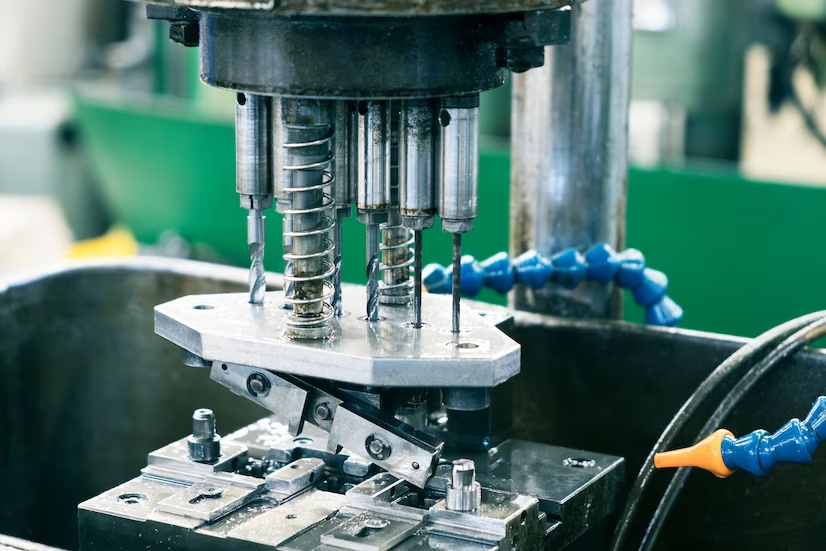Injection molds, the workhorses of the plastic world, are marvels of engineering. These intricate assemblies transform molten plastic into an endless variety of shapes. But how do these molds come to life? Let’s delve into the fascinating process of making injection molds, from the initial design concept to the final, production-ready mold.
The Blueprint: Conception and Design
The process of Injection molding China begins with a clear vision of the final plastic part. This vision translates into a detailed 3D CAD model. Here, designers meticulously create a digital representation of the part, incorporating all its features, dimensions, and tolerances. This model becomes the foundation for the mold design.
Mold Design: Considering Functionality and Efficiency
The mold design goes beyond simply replicating the part cavity. It needs to consider factors like material flow, gating, cooling, and ejection. Here are some key aspects of mold design:
Parting Line: The parting line defines where the two halves (A-plate and B-plate) of the mold separate to allow part ejection. Careful placement ensures smooth mold opening and minimizes flash (excess plastic) formation.
Gating: The gate is the critical point where molten plastic enters the cavity. The design of the gate significantly impacts material flow, surface finish, and potential weld lines.
Cooling Channels: A network of cooling China die casting channels is integrated into the mold base to facilitate efficient heat transfer from the molten plastic. The placement and design of these channels are crucial for achieving uniform cooling and dimensional accuracy.
Ejection System: Strategically placed ejector pins within the B-plate ensure smooth ejection of the finished part after solidification.
Choosing the Right Materials:
The mold itself is typically constructed from high-grade steel. The specific steel type depends on the complexity of the part, the expected production volume, and the material being molded. For high-wear areas like the core and cavity, tool steels with superior hardness and wear resistance are often used.
Manufacturing the Mold: A Symphony of Techniques
Once the design is finalized, the mold manufacturing process begins. Here’s a glimpse into the different techniques employed:
CNC Machining: This computer-controlled machining process removes material from solid steel blocks to create the core, cavity, and mold base features.
Electrode Discharge Machining (EDM): This technology uses electrical sparks to erode material, allowing for the creation of complex shapes or features that are difficult or impossible to machine with traditional methods.
Polishing: The mold surfaces, especially the cavity and core, are meticulously polished to achieve the desired surface finish on the molded parts.
Assembly and Testing: Putting it All Together
After the individual components are manufactured, it’s time for assembly. The mold base, core, cavity, and other elements are carefully assembled and secured. The cooling channels are connected, and the ejector system is tested for functionality.
Mold Trial and Refinement:
The first molded parts are produced in a trial run. These parts are meticulously inspected to ensure they meet all dimensional and quality specifications. If any discrepancies are found, the mold may need adjustments or minor modifications before it’s ready for full-scale production.
Quality Control: Ensuring Consistency
Throughout the manufacturing process, rigorous quality control measures are implemented. These measures ensure that the mold meets the design specifications and produces parts with consistent quality.
The Journey’s End: A Production-Ready Mold
Once the mold passes all inspections and trial runs, it’s ready to embark on its production journey. This meticulously crafted tool will churn out countless plastic parts, shaping the world around us, one molded piece at a time.
Additional Considerations: Mold Maintenance and Beyond
Injection molds, while robust, require regular maintenance to ensure optimal performance. This includes cleaning, lubrication, and periodic inspection for wear and tear. As production needs evolve, molds can be modified or updated to accommodate design changes or new materials.
In Conclusion:
Creating an injection mold is a complex and precise process, demanding expertise in design, engineering, and machining. Understanding the various stages involved, from the initial concept to the final production-ready mold, offers a deeper appreciation for the intricate world of injection molding and the vital role these molds play in shaping our plastic world.
Must Read :
- What Time Does The NFL Draft Start?
- Best Paying Jobs In Consumer Durables
- What’s Been Your Experience Using Costco Travel To Book A Vacation?

